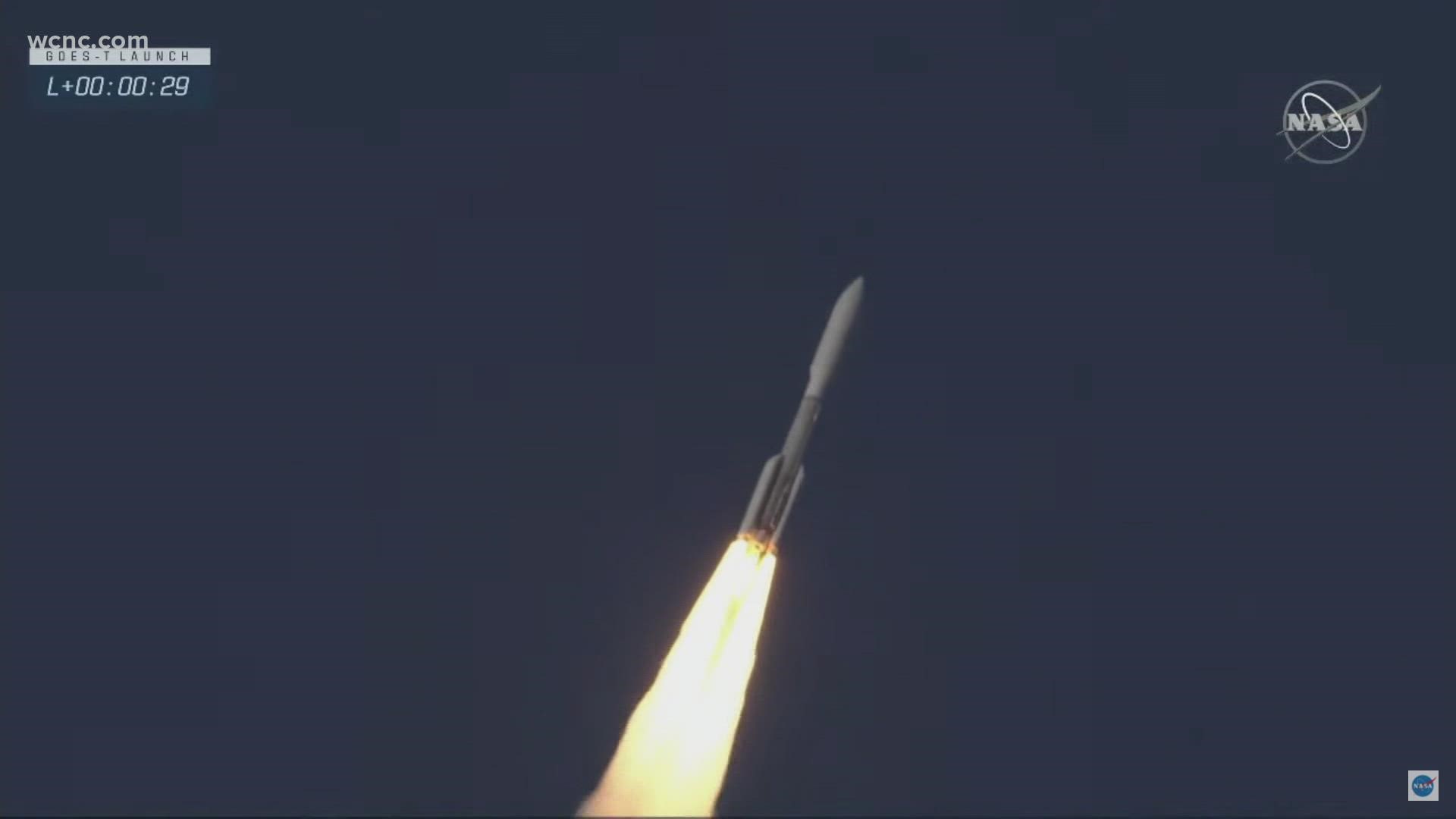CAPE CANAVERAL, Fla. — America’s newest weather satellite blasted off Tuesday to improve wildfire and flood forecasting across the western half of the country.
It's the replacement for a satellite launched exactly four years ago, which ended up with a cooling line blockage that hindered its main camera.
The National Oceanic and Atmospheric Administration said the new model is redesigned to avoid the problem. It will be designated GOES-18 after reaching an equatorial orbit 22,000 miles (36,000 kilometers) up. The first images should come next year, following months of testing.
This is the third in a nearly $11.7 billion series of four weather satellites that are among the most advanced ever built; the cost includes 30 years of operation. The first soared in 2016 to track Atlantic hurricanes and other East Coast weather, while the second lifted off March 1, 2018. The fourth is set to launch in 2024.
WCNC Charlotte Chief Meteorologist Brad Panovich joined WCNC Charlotte viewers live Tuesday as he witnessed and explained the launch of the new satellite, which contains improved technology to aid with forecasting and storm tracking along the west coast of the United States.
The NASA-supported GOES satellites “provide the only continuous coverage of weather and hazardous environmental conditions in the Western Hemisphere,” said NOAA program director Pam Sullivan. "These observations are even more critical now in a time when the U.S. is experiencing a record number of billion-dollar disasters."
GOES-17 — which is losing as much as 10% of its data because of overheating camera detectors — will be moved aside as an orbiting spare, once the newly launched craft is ready to take its place next year over the Pacific. Each is the size of a small school bus, weighing more than 6,000 pounds (2,700 kilograms).
Besides observing conditions here on Earth, the satellites also monitor solar flares and the resulting space weather.
Despite its flaw, GOES-17 beamed back stunning pictures of the Tonga volcanic eruption in January. The new satellite should provide even better images of such events, according to NOAA scientists.
NASA launched the GOES-T weather observing and environmental monitoring system satellite at 4:38 p.m. on March 1 from Space Launch Complex-41.
Tuesday's Cape Canaveral liftoff aboard United Launch Alliance's Atlas V rocket coincided with the opening of the so-called meteorological spring. The three-month season begins March 1, as defined by meteorologists and climatologists for record-keeping. This year's spring equinox falls on March 20.

